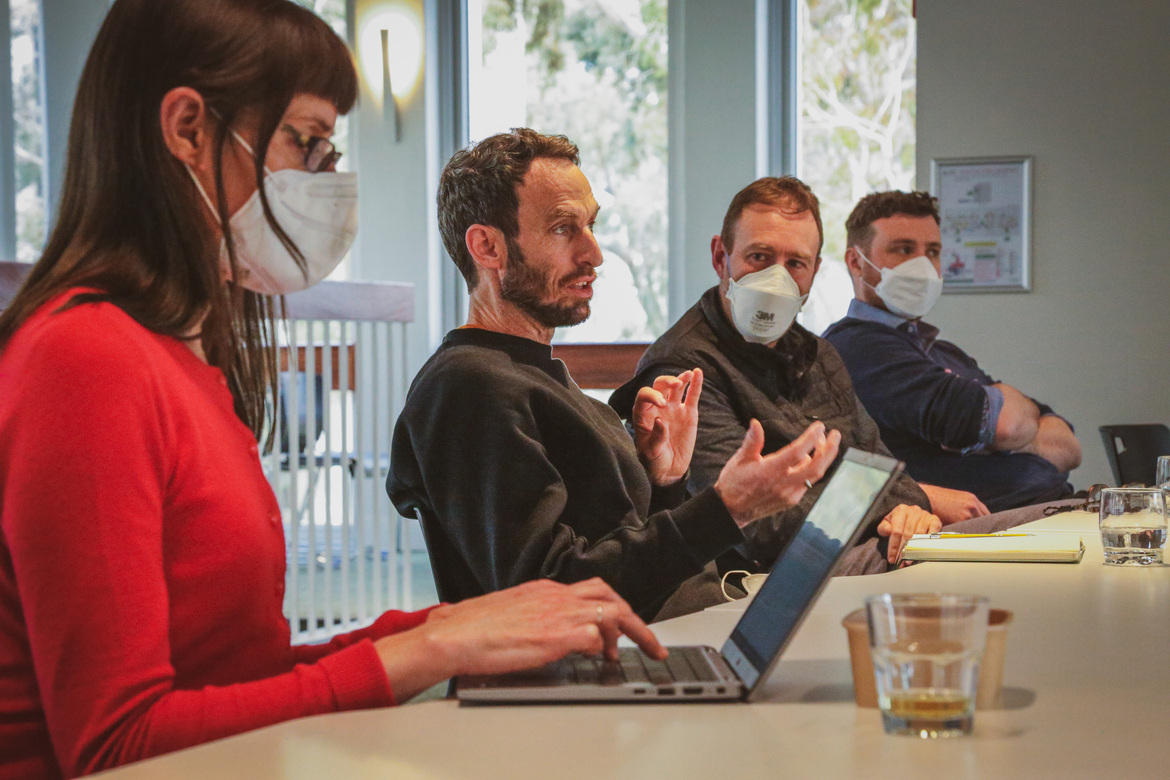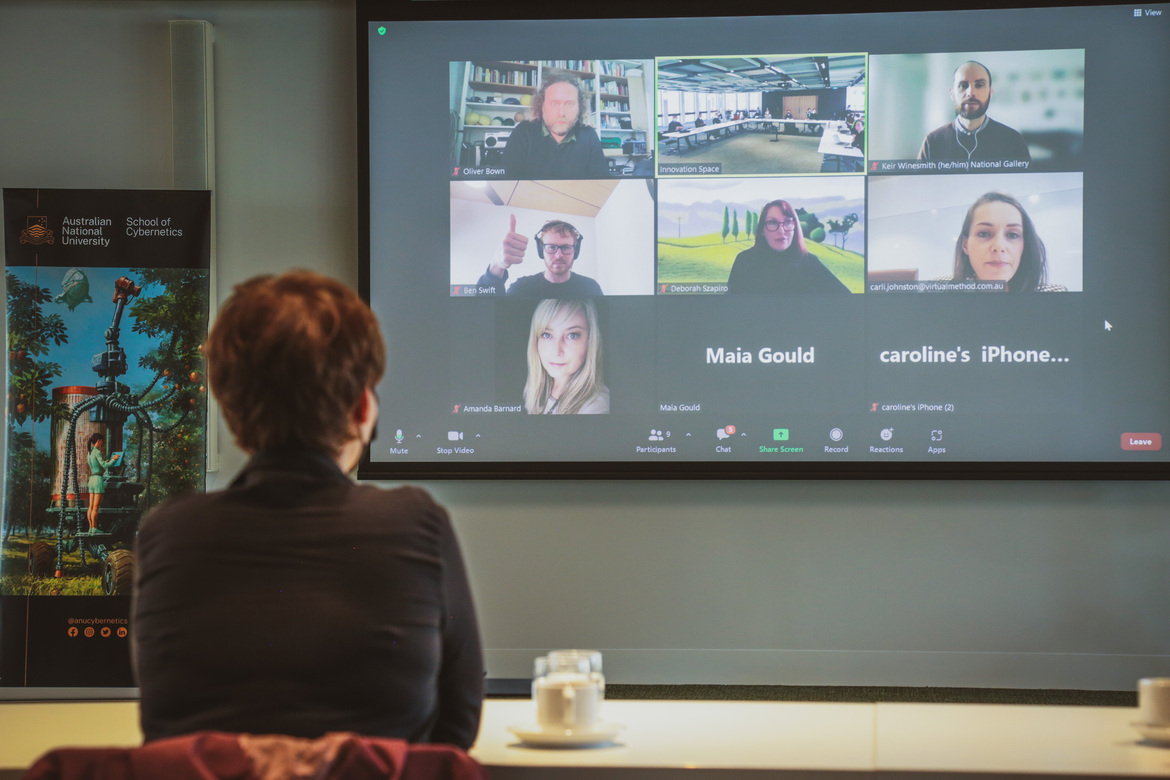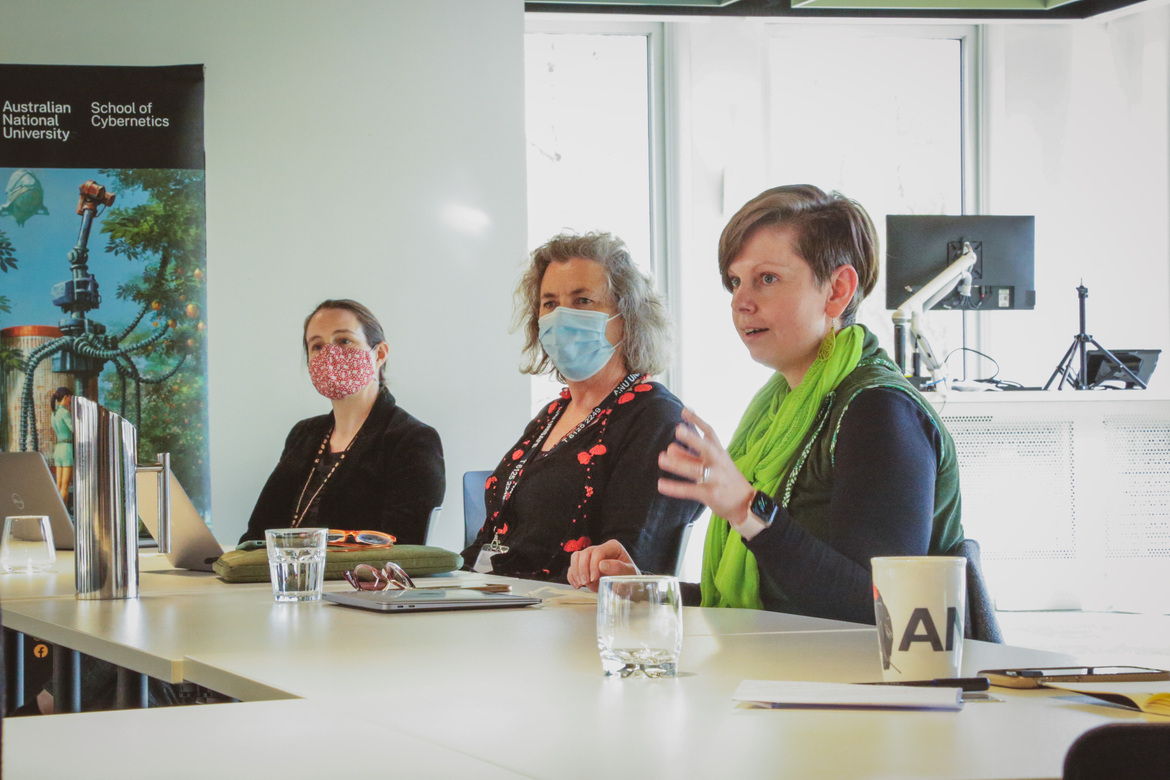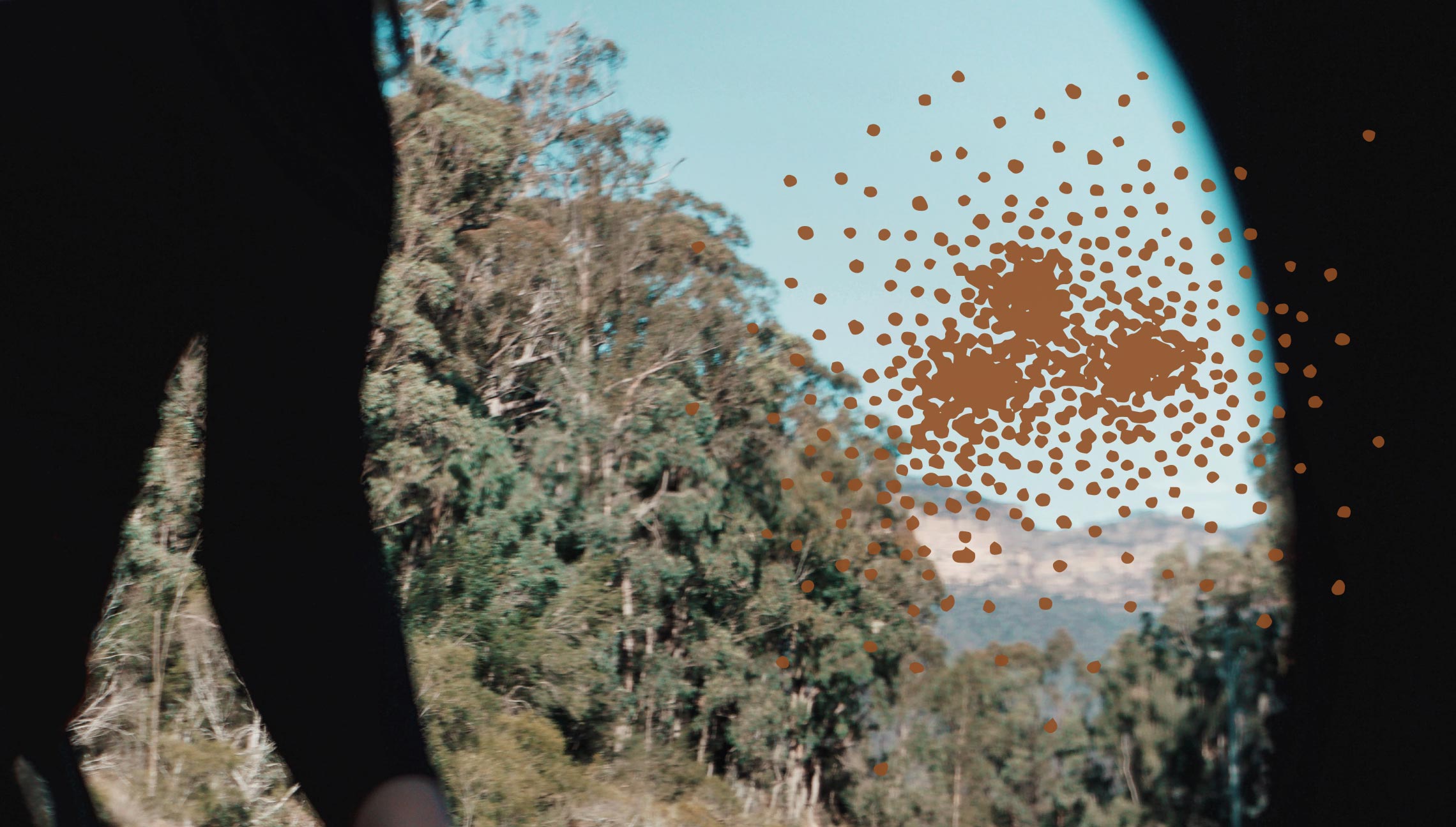Last month the School of Cybernetics and the School of Computing hosted Stela Solar, Director of the National AI Centre (NAIC) at the CSIRO, for two roundtables – one on AI and the creative industries and another on AI education. The intention of these sessions held as part of the NAIC’s national listening tour was to explore the potential of AI and what we could be doing more of here in Australia.

We invited a wide range of guests representing the cultural sector, industry, universities and government to participate in these discussions. Two critical questions were raised from the School of Cybernetics: 1. What do we mean when we talk about AI? 2. How do we apply the promise and inspiration of AI to a broader social context that takes into account the many other complex systems in which it operates as we shape the future safely, sustainably and responsibly?
From a cybernetics perspective, AI is a set of technological systems, each with its own ecosystem of issues and agents, continuously changing in relationship with many other systems that evolve over time. That’s why in cybernetics, we look at the system as the unit of analysis rather than individual technologies that are changing rapidly. And we always consider technological systems in relationship with people and the environment.
Stela Solar, Director of the National AI Centre, CSIRO, reflects on her visit to ANU School of Cybernetics. Video credit: Rafael Florez, ANU Centre for Teaching and Learning.#
AI and the creative industries#
In the AI and the creative industries roundtable, we discussed how the arts has always been a driving force for drawing attention to critical issues related to ethics, transparency and fairness as technology continues to impact people and the environment. Participants spoke of the potential for technologists to collaborate more closely with the arts to communicate the most pressing issues associated with AI, noting that it is the creative industries that are expert in engaging the public and are best placed to improve broad community understanding of AI so that community members can imagine how it can be used safely and responsibly to benefit society.
Many examples were shared about how the arts can envision and create better futures; among them are creative projects that explored concerns around privacy, fairness and diversity, including:
-
Training Humans, conceived by AI researchers Kate Crawford and artist Trevor Paglen to raise awareness of the biases inherent in the collections of photos used by scientists to train artificial intelligence (AI) systems in how to “see” and categorise the world.
-
Cybernetic Serendipity, the first major museum exhibition to focus on the intersection of art and technology curated by Jasia Reichardt and installed at the Institute of Contemporary Art in London in 1968.
-
Ngapulara Ngarngarnyi Wirra (Our Family Tree), the Data Tracker project from Angie Abdilla, Baiden Pailthorpe and Adam Goodes that links Goodes’ AFL performance biometric data collected over many years with ancient Aboriginal knowledge systems, the direction of the wind and a very old sacred wirra (tree) deep in Adnyamathanha Country.
We discussed what kinds of support would be needed for creative AI practitioners to flourish, from grants for hacker communities, to access to community spaces in which to explore the potential of new technologies. Participants shared stories of successful artistic collaborations, communities of practice and creative residencies, proven models we could emulate to enable more creative practitioners to collaborate exploratory research and creative practice. An example of a community approach to creative practice that also provides public education is Grey Area, a collective in San Francisco that aims to tackle issues using digital tools to create art and design projects that benefit society through testing and scaling projects with high impact potential. This collective was able to secure a building as a viable place in which creative communities could work and innovate, addressing the issue of expensive real estate that has been identified as a major barrier to creative communities in Australia.
Cross university funding for creative endeavours was another area identified as having potential to showcase the role of AI in extending creativity, not only to demonstrate some of the more positive aspects of AI applications, but also to create compelling artworks that can raise awareness of diverse careers in the AI industry. We explored how stories can be used to show what we want from technology and how Australia’s national science agency could invest more in the creative industries.
The issue of how academic researchers can secure industry partnerships that allow them to both support and critic AI development at the same time was discussed. One participant spoke of the need to support the social sciences to document the history of technologies as they evolve and and shape our society.



AI in education#
In the AI in education roundtable, participants discussed the need for more investment in education – the recent cuts to universities mean that current academic institutions are unable to recruit the right kind of expertise into teaching staff. When it comes to the diverse range of roles that are available in AI careers, a need to create more welcoming and inclusive entry points was identified as necessary to ensure job pathways. We also need to make it easier for people to transition into AI fields from multi-disciplinary backgrounds by providing short courses and microcredentials.
While it was suggested that AI be taught beyond Computing & Engineering schools and the need for interdisciplinarity approaches, it is a fact that this kind of collaboration is not well supported in most university degree structures. There is a need for greater flexibility to enable AI components to be built in to all subject areas as a sub-major. Conversely, it would be beneficial for computer science degrees to integrate humanities subjects into any technical studies relating to AI.
The ANU School of Cybernetics’ interdisciplinarity approach was discussed as an effective means of teaching a diverse group the core skills needed to develop AI-enabled systems that are safe, responsible and equitable - society-compatible systems that work not just for individuals, but for society as whole as we shape increasingly complex futures. Beyond the university, Learning Experiences and participation in international endeavours such as AI Ethics: A global perspective in which A/Professor Ellen broad presented a Cybernetics approach to ethical AI design) can assist organisations and individuals to reframe how we think about AI in a broad context.
Gender imbalance in AI-related fields continues to be a major barrier and there is an urgent need to encourage more women into technical careers more broadly. The School of Cyberbernetics’ focus on ensuring diversity and inclusion in its Master and PhD cohorts, including by recognising Indigenous knowledge systems and providing support for participation by First Nations students, is an essential part of its approach to training a new kind of practitioner equipped with the skills needed to improve capabilities for steering AI-enabled futures safely and sustainably.
It was noted that there is a lack of general community understanding of what AI technologies can offer. How best to educate potential practitioners about AI use for the public good? A major public engagement campaign could help address widespread community mistrust and fear about the negative consequences of AI systems. This education, however, needs to begin in primary school and include teachers as well as those who influence the influencers – parents, peers, siblings. This kind of engagement would go a long way in improving diversity and inclusion while also building acceptance that anyone can go into an AI-related field as so many diverse skill sets are needed.
As well as attracting candidates from computer science backgrounds, the AI industry also needs to engage those from art and design to create digital animations and stories, marketing and communication professionals to sell products and services, social science researchers to improve user experience, ethics and fairness and people with skills in project management, business, and finance. Other practical ways 21st-century skills could be taught to a broader cohort could be through technical training colleges, workplace learning and microcredentials. Encouraging a more diverse cohort of people to work in AI related fields will take a whole of society effort and roundtable participants appreciated the opportunity to share their ideas with the National AI Centre.
Interested in shaping the future?#
The ANU School of Cybernetics is seeking applications from original thinkers, doers andmakers who are curious about how technology, people and the environment interact, and how they are shaped by each other. Apply for our Master of Applied Cybernetics - the world’s first graduate program focusing on the challenges of ensuring new technological systems are safe, sustainable and responsible.

